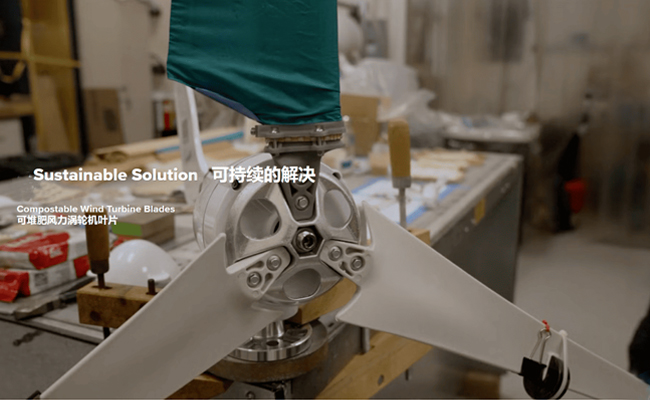Are wind turbine blades garbage?
Most wind generator blades end up in landfills. A recent study estimates that by 2050, the U.S. alone will discard over 2 million tons of decommissioned wind generator blades. Globally, this number could reach 43 million tons.
As turbine manufacturing escalates globally, Ecuador’s rainforests have experienced intensive logging operations to meet material demands. Some manufacturers have switched to PET plastic, but this only adds millions of tons of PET waste to the environment.
The Concept of Mushroom-Based Wind Generator Blades
For La Saponara, wind generator blade pollution is a pressing issue. “We want clean energy, but it must not pollute the environment or cause deforestation,” she said. “If we work in clean energy, we should not cut down Amazon forests. We want to be responsible global citizens.”

Her vision is a compostable wind generator blade. Instead of fiberglass and balsa wood, it would use bamboo woven with agricultural waste, mycelium (the root-like structure of fungi), and biomass. She first experimented with mycelium in 2019 while searching for a sustainable alternative to fossil-based plastics in bicycle helmets.
Mycelium is highly versatile. La Saponara’s lab studies it as a low-carbon, non-toxic, and compostable replacement for non-degradable materials like polyurethane and acrylic. Scaling this up to wind generator blades is a bigger challenge, requiring teamwork across multiple disciplines.
“This project sprouted like mushrooms after rain,” she joked. “Creating this design requires expertise from many fields.”
The Bamboo and Mycelium Team
The project includes co-principal investigator Barbato and research engineer Shuhao Wan, who focus on structural support. A diverse group of students from engineering and design also contribute.
Fortunately, the team has a multidisciplinary researcher who is also a skilled bamboo craftsman. Shuhao Wan, a research engineer, builds model ships as a hobby and is now testing different bamboo weaving techniques for the project.

Meanwhile, the team is optimizing the substrate for growing and attaching mycelium. Mycelium is remarkable because it grows precisely where needed under the right conditions. It thrives on waste materials like coffee grounds and discarded plastic, with its properties shaped by its feedstock. However, it does not consume everything—antifungal bamboo, for instance, is off-limits. The team is also testing post-consumer textile waste. This could repurpose landfill-bound materials for growing mycelium.
Prototype Development and Testing
The team has built a prototype and started testing. “We want to measure how fast we can rotate and how much power we can generate,” La Saponara said.
The mycelium-bamboo composite will replace the wind generator blades of a 1 kW commercial wind turbine at the Western Cooling Efficiency Center, away from the main campus. The team will also test its durability to ensure it withstands winds up to 38 m/s.
Toward Commercialization and Broader Applications
“Once we achieve a 1 kW proof of concept, we can collaborate with companies to commercialize this idea for distributed energy,” La Saponara said. This is the first step toward broader adoption. These wind generator blades could also support disaster-stricken regions needing sustainable energy solutions. Wind power could pair with solar panels for better efficiency.
“What we are doing now is not working,” she emphasized. “We are at a turning point. If we don’t act, the next generation will pay the price. Environmental engineering must include environmental justice.”



